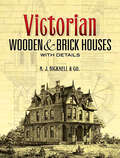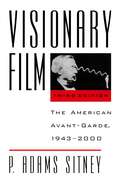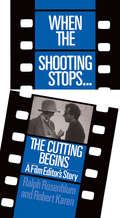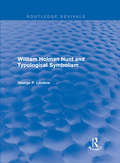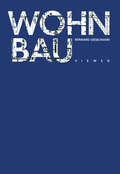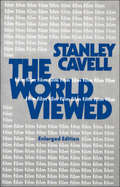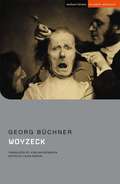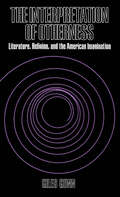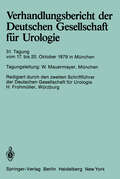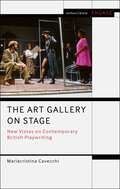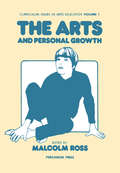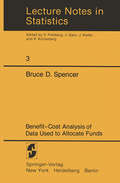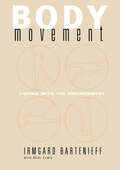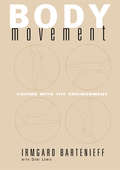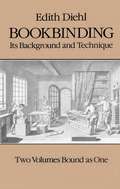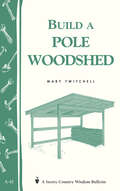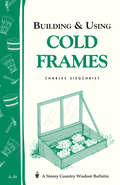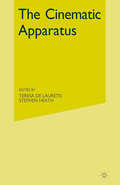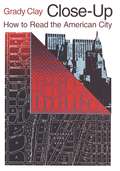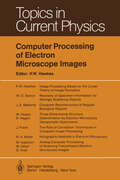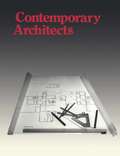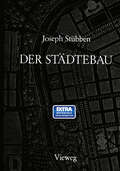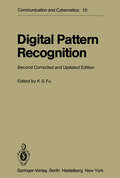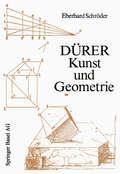- Table View
- List View
Victorian Wooden and Brick Houses with Details
by A. J. Bicknell Co.This vintage volume offers a treasure trove of floor plans, elevations, and details of residences and public buildings. Artists, architects, and historians alike will find it an endless source of inspiration.Featured buildings include villas, cottages, and farm houses as well as churches, schools, banks, and many other structures. Eighty-one remarkably detailed illustrations capture the elaborate, distinctive beauty of Victorian-era cornices, staircases, gables, verandas, doors, dormers, and other architectural elements. In addition, a fascinating "Specifications" section highlights construction guidelines for masons, bricklayers, and carpenters.
Visionary Film: The American Avant-Garde, 1943-2000
by P. Adams SitneyCritics hailed previous editions of Visionary Film as the most complete work written on the exciting, often puzzling, and always controversial genre of American avant-garde film. This book has remained the standard text on American avant-garde film since the publication of its first edition in 1974. Now P. Adams Sitney has once again revised and updated this classic work, restoring a chapter on the films of Gregory J. Markopoulos and bringing his discussion of the principal genres and major filmmakers up to the year 2000.
When The Shooting Stops ... The Cutting Begins: A Film Editor's Story
by Ralph Rosenblum Robert KarenThe story of one of the most important and least-understood jobs in moviemaking-film editing-is here told by one of the wizards, Ralph Rosenblum, whose credentials include six Woody Allen films, as well as The Pawnbroker, The Producers, and Goodbye, Columbus. Rosenblum and journalist Robert Karen have written both a history of the profession and a personal account, a highly entertaining, instructive, and revelatory book that will make any reader a more aware movie-viewer.
William Holman Hunt and Typological Symbolism (Routledge Revivals)
by George P. LandowIn this study, first published in 1979, Landow contends that Hunt’s version of Pre-Raphaelitism concerned itself primarily with an elaborate system of painterly symbolism rather than with a photographic realism as has been usually supposed. Like Ruskin, Hunt believed that a symbolism based on scriptural typology – the method of finding anticipations of Christ in Hebrew history – could produce an ideal art that would solve the problems of Victorian painting. According to Hunt, this elaborate symbolism could simultaneously avoid the dangers of materialism inherent in a realistic style, the dead conventionalism of academic art, and the sentimentality of much contemporary painting. George Landow examines Hunt’s work in the context of this argument and, drawing on much unknown or previously inaccessible material, shows how he used texts, frames, and symbols to create a complex art of mediation that became increasingly visionary as the artist grew older. This book is ideal for students of art history.
William Holman Hunt and Typological Symbolism (Routledge Revivals)
by George P. LandowIn this study, first published in 1979, Landow contends that Hunt’s version of Pre-Raphaelitism concerned itself primarily with an elaborate system of painterly symbolism rather than with a photographic realism as has been usually supposed. Like Ruskin, Hunt believed that a symbolism based on scriptural typology – the method of finding anticipations of Christ in Hebrew history – could produce an ideal art that would solve the problems of Victorian painting. According to Hunt, this elaborate symbolism could simultaneously avoid the dangers of materialism inherent in a realistic style, the dead conventionalism of academic art, and the sentimentality of much contemporary painting. George Landow examines Hunt’s work in the context of this argument and, drawing on much unknown or previously inaccessible material, shows how he used texts, frames, and symbols to create a complex art of mediation that became increasingly visionary as the artist grew older. This book is ideal for students of art history.
The World Viewed: Reflections on the Ontology of Film, Enlarged Edition (Harvard Film Studies (hup) Ser.)
by Stanley CavellStanley Cavell looks closely at America’s most popular art and our perceptions of it. His explorations of Hollywood’s stars, directors, and most famous films—as well as his fresh look at Godard, Bergman, and other great European directors—will be of lasting interest to movie-viewers and intelligent people everywhere.
Woyzeck (Student Editions)
by Georg BüchnerWritten in 1836, Woyzeck is often considered to be the first truly modern play.The story of a soldier driven mad by inhuman military discipline and acute social deprivation is told in splintered dialogue and jagged episodes, which are as shocking and telling today as they were when first performed, almost a century after the author's death, in Munich 1913.This edition contains introductory commentary and notes by Laura Martin from the University of Glasgow. METHUEN DRAMA STUDENT EDITIONS are expertly annotated texts of a wide range of plays from the modern and classic repertoires. A well as the complete text of the play itself, this volume contains:· A chronology of the play and the playwright's life and work· an introductory discussion of the social, political, cultural and economic context in which the play was originally conceived and created· a succinct overview of the creation processes followed and subsequent performance history of the piece· an analysis of, and commentary on, some of the major themes and specific issues addressed by the text· a bibliography of suggested primary and secondary materials for further study.
The Interpretation of Otherness: Literature, Religion, and the American Imagination
by Giles GunnIn a unique and probing analysis, this study examines the function of literary criticism in religious studies and explores the relation of literature to religion in the works of major American writers.
31. Tagung 17. bis 20. Oktober 1979, München (Verhandlungsbericht der Deutschen Gesellschaft für Urologie #31)
by H. FrohmüllerThe Art Gallery on Stage: New Vistas on Contemporary British Playwriting (Methuen Drama Engage)
by Mariacristina CavecchiThe Art Gallery on Stage is the first book to consider the representation of the art gallery on the contemporary British stage and to discuss how playwrights have begun to regard it as inspiration, location, focus or theme in an ever-more intense game of cross-fertilization. The study analyzes the impact on dramatic form and theatrical presentation of what has been a paradigmatic shift in the way art galleries and museums display their collections and how these are perceived, establishing a hitherto unexplored connection between modes of exhibiting and modes of representation. It traces a trajectory from plays that were initially performed in traditional theatres in accordance with a naturalistic play structure to plays that favour of a radical reconfiguration of visual representation. Indeed, since the beginning of the new millennium, playwrights and theatre-makers have increasingly experimented with new dramatic forms and site-specific venues, while forging collaborations with art makers and curators.The book focuses on plays from the 1980s onwards, such as Howard Barker's Scenes from an Execution, Nick Dear's The Art of Success, Alan Bennett's A Question of Attribution, Timberlake Wertenbaker's Three Birds Alighting on a Field and The Line, David Edgar's Pentecost, Martin Crimp's Attempt on Her Life, Rebecca Lenkiewicz's Shoreditch Madonna and The Painter, David Leddy's Long Live the Little Knife, and Tim Crouch's My Arm, An Oak Tree and England, and considers the vital contribution to the field made by set designers. Ultimately, through this study, we come to understand how modern drama can offer a set of interpretative tools to enhance our understanding of the mechanisms underlying the social construction of art and, furthermore, the potential of theatre and the gallery space to question our fundamental cultural assumptions and values.
The Arts and Personal Growth: Curriculum Issues in Arts Education
by Malcolm RossThe Arts and Personal Growth focuses on the influence of arts education to personal growth, including the development of curriculum that puts the study of the arts at the core and learning of the arts in different time frames and educational considerations. The book is composed of papers derived from the conference conducted at Dillington House in Somerset from July 23 to 28, 1979 under the auspices of the University of Exeter with assistance from the Michael Marks Charitable Trust. The selection first outlines the meaning of the arts and the need for school curriculum to include both social and political settings in curriculum development. The book then examines the interrelations of arts education, curriculum, and multi-cultural society, putting emphasis on the contention that minorities have brought with them valid cultures that have various art forms. The text underscores the need to put arts at the highest consideration in curriculum development. The challenges posed to teachers of arts and the ability of experts in the arts to maintain natural and human artefacts are noted. The manuscript also ponders on the reality that learning the arts surpasses age and educational boundaries. The influence of art to a sound personal development is also mentioned. The publication is a dependable reference for readers and art patrons interested in the value of arts in personal growth.
Benefit-Cost Analysis of Data Used to Allocate Funds (Lecture Notes in Statistics #3)
by Bruce SpencerThis monograph treats the question of determining how much to spend for the collection and analysis of public data. This difficult problem for government statisticians and policy-makers is likely to become even more pressing in the near future. The approach taken here is to estimate and compare the benefits and costs of alternative data programs. Since data are used in many ways, the benefits are hard to measure. The strategy I have adopted focuses on use of data to determine fund allocations, particularly in the General Revenue Sharing program. General Revenue Sharing is one of the largest allocation programs in the United States. That errors in population counts and other data cause sizable errors in allocation has been much publicized. Here we analyze whether the accuracy of the 1970 census of population and other data used by General Revenue Sharing should be improved. Of course it is too late to change the 1970 census program, but the method and techniques of analysis will apply to future data programs. In partic ular, benefit-cost analyses such as this are necessary for informed decisions about whether the expense of statistical programs is justi fied or not. For example, although a law authorizing a mid-decade census was enacted in 1976, there exists great doubt whether funds will be provided so a census can take place in 1985. (The President's Budget for 1981 allows no money for the mid-decade census, despite the Census Bureau's request for $1. 9 million for planning purposes.
Body Movement: Coping with the Environment
by Irmgard Bartenieff Dori Lewis"'Irmgard Bartenieff has a profound knowledge of the human body and how it moves. I am delighted that this will now be made available to many more people.'." -- George Balanchine of Director, New York City Ballet"'Irmgard Bartenieff's pioneering work in the multiple applications of Labananalysis has had a transforming influence on many areas of movement training. Her careful and detailed development of the spatial principles into active corrective work has illuminated and altered the training of people as varied as dancers, choreographers, physical therapists, movement and dance therapists, and psychotherapists. Anthropologists and non-verbal communication researchers have found their world view necessarily altered by her fundamental innovations. The field of body/mind work will need to adapt to include her clear working through of basic principles.'." -- Kayla Kazahn Zalk of President, American Dance Guild
Body Movement: Coping with the Environment
by Irmgard Bartenieff Dori Lewis"'Irmgard Bartenieff has a profound knowledge of the human body and how it moves. I am delighted that this will now be made available to many more people.'." -- George Balanchine of Director, New York City Ballet"'Irmgard Bartenieff's pioneering work in the multiple applications of Labananalysis has had a transforming influence on many areas of movement training. Her careful and detailed development of the spatial principles into active corrective work has illuminated and altered the training of people as varied as dancers, choreographers, physical therapists, movement and dance therapists, and psychotherapists. Anthropologists and non-verbal communication researchers have found their world view necessarily altered by her fundamental innovations. The field of body/mind work will need to adapt to include her clear working through of basic principles.'." -- Kayla Kazahn Zalk of President, American Dance Guild
Bookbinding: Its Background and Technique
by Edith DiehlEdith Diehl (1876-1955) was one of the world's foremost practitioners of traditional bookbinding and an exceptionally able teacher. From the vantage point of a lifetime's experience, she gives today's bookbinders a historical survey of this centuries-old art and an eminently practical guide.Nearly one half of the encyclopedic volume is devoted to an overview of the historical development of bookbinding. The author shows how the codex form of the book became identified with the Christian era, how bookbinding became a craft and trade in the 15th century, and how the production and distribution of books shifted from the monasteries and universities to the illustrious printer-publishers of the 15th and 16th centuries. She describes various bookbinding practices such as sewing, the use of boards and leathers, hand versus machine binding, cased books, etc. And she examines in depth the different national styles of book decoration in Italy, France, England, Germany, North America, and other countries, and the specific contributions of such influential bookbinders as Jean Grolier, Thomas Mahieu, Le Gascon, Samuel Mearne, Roger Payne, Jacob Krause, Edmund Ranger, and John Ratcliff. Ninety-two full-page plates provide visualization of certain key points and, above all, numerous examples of the finest decorated bindings.Edith Diehl then guides the reader through more than 400 profusely illustrated pages on the craft of hand bookbinding. She details and illustrates the steps involved in the nearly 30 necessary binding operations: collating and paging, pulling and removing glue, guarding and mending, pressing, sewing, backing, lacing-in, headbanging, lining up back, casing texts in protective cover, covering, cutting inside margins and filling in, and many more. In addition she conveys much useful information on such ancillary topics as doublures, fly-leaves, half bindings, limp bindings, vellum bindings, slipcases, repairing old bindings, cleaning and washing papers, materials (leather, paper, gold leaf, glue, paste), finishing tools, tooling, lettering, etc. The 242 illustrations that accompany this book-within-a-book are unmatched for economy and clarity.
Build a Pole Woodshed: Storey Country Wisdom Bulletin A-42 (Storey Country Wisdom Bulletin)
by Mary TwitchellSince 1973, Storey's Country Wisdom Bulletins have offered practical, hands-on instructions designed to help readers master dozens of country living skills quickly and easily. There are now more than 170 titles in this series, and their remarkable popularity reflects the common desire of country and city dwellers alike to cultivate personal independence in everyday life.
Building & Using Cold Frames: Storey Country Wisdom Bulletin A-39 (Storey Country Wisdom Bulletin)
by Charles SiegchristSince 1973, Storey's Country Wisdom Bulletins have offered practical, hands-on instructions designed to help readers master dozens of country living skills quickly and easily. There are now more than 170 titles in this series, and their remarkable popularity reflects the common desire of country and city dwellers alike to cultivate personal independence in everyday life.
Close-Up: How to Read the American City
by Grady Clay"Grady Clay looks hard at the landscape, finding out who built what and why, noticing who participates in a city's success and who gets left in a 'sink,' or depressed (often literally) area. Clay doesn't stay in the city; he looks at industrial towns, truck stops, suburbs—nearly anywhere people live or work. His style is witty and readable, and the book is crammed with illustrations that clarify his points. If I had to pick up one book to guide my observations of the American scene, this would be it."—Sonia Simone, Whole Earth Review "The emphasis on the informal aspects of city-shaping—topographical, historical, economic and social—does much to counteract the formalist approach to American urban design. Close-Up...should be required reading for anyone wishing to understand Americans and their cities."—Roger Cunliffe, Architectural Review "Close-Up is a provocative and stimulating book."—Thomas J. Schlereth, Winterthur Portfolio "Within this coherent string of essays, the urban dweller or observer, as well as the student, will find refreshing strategies for viewing the environmental 'situations' interacting to form a landscape."—Dallas Morning News "Clay's Close-Up, first published in 1973, is still a key book for looking at the real American city. Too many urban books and guidebooks concentrate on the good parts of the city....Clay looks at all parts of the city, the suburbs, and the places between cities, and develops new terms to describe parts of the built environment—fronts, strips, beats, stacks, sinks, and turf. No one who wants to understand American cities or to describe them, should fail to know this book. The illustrations are of special interest to the guidebook writer."—American Urban Guidenotes
Computer Processing of Electron Microscope Images (Topics in Current Physics #13)
by J. Frank P. W. Hawkes R. Hegerl W. Hoppe M. S. Isaacson D. Kopf J. E. Mellema W. O. Saxton M. Utlaut R. H. WadeTowards the end of the 1960s, a number of quite different circumstances combined to launch a period of intense activity in the digital processing of electron micro graphs. First, many years of work on correcting the resolution-limiting aberrations of electron microscope objectives had shown that these optical impediments to very high resolution could indeed be overcome, but only at the cost of immense exper imental difficulty; thanks largely to the theoretical work of K. -J. Hanszen and his colleagues and to the experimental work of F. Thon, the notions of transfer func tions were beginning to supplant or complement the concepts of geometrical optics in electron optical thinking; and finally, large fast computers, capable of manipu lating big image matrices in a reasonable time, were widely accessible. Thus the idea that recorded electron microscope images could be improved in some way or rendered more informative by subsequent computer processing gradually gained ground. At first, most effort was concentrated on three-dimensional reconstruction, particu larly of specimens with natural symmetry that could be exploited, and on linear operations on weakly scattering specimens (Chap. l). In 1973, however, R. W. Gerchberg and W. O. Saxton described an iterative algorithm that in principle yielded the phase and amplitude of the electron wave emerging from a strongly scattering speci men.
Digital Pattern Recognition (Communication and Cybernetics #10)
by T. M. Cover Edwin Diday K. S. Fu A. Rosenfeld J. C. Simon T. J. Wagner J. S. Weszka J. J. WolfSince its publication in 1976, the original volume has been warmly received. We have decided to put out this updated paperback edition so that the book can be more accessible to students. This paperback edition is essentially the same as the original hardcover volume except for the addition of a new chapter (Chapter 7) which reviews the recent advances in pattern recognition and image processing. Because of the limitations of length, we can only report the highlights and point the readers to the literature. A few typographical errors in the original edition were corrected. We are grateful to the National Science Foundation and the Office of Naval Research for supporting the editing of this book as well as the work described in Chapter 4 and a part of Chapter 7. West Lafayette, Indiana March 1980 K. S. Fu Preface to the First Edition During the past fifteen years there has been a considerable growth of interest in problems of pattern recognition. Contributions to the blossom of this area have come from many disciplines, including statistics, psychology, linguistics, computer science, biology, taxonomy, switching theory, communication theory, control theory, and operations research. Many different approaches have been proposed and a number of books have been published. Most books published so far deal with the decision-theoretic (or statistical) approach or the syntactic (or linguistic) is still far from its maturity, many approach.
